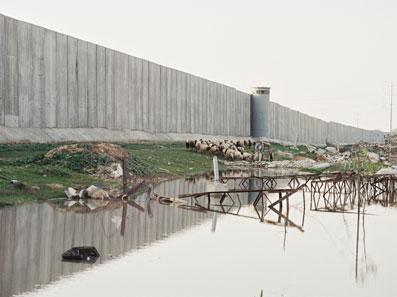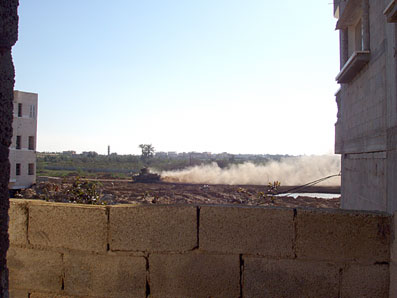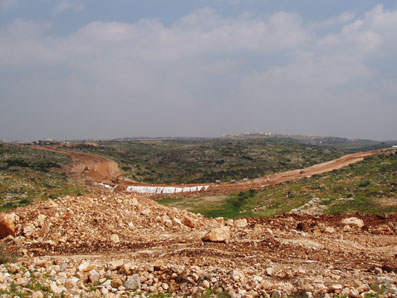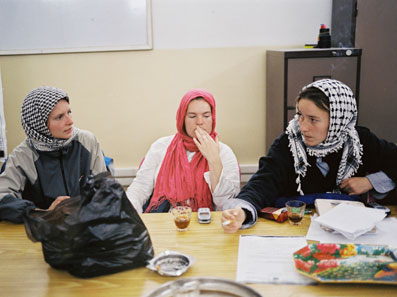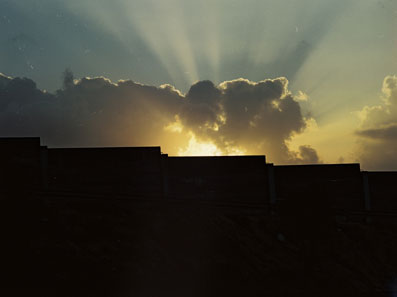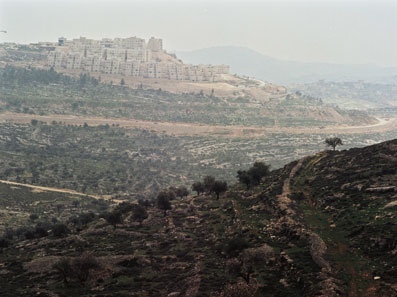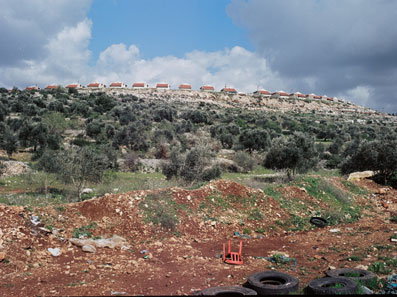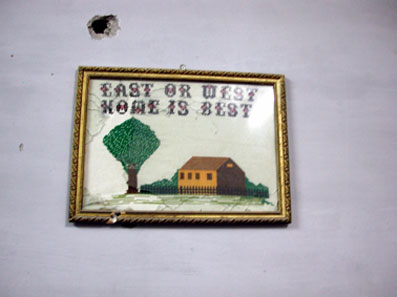|
In the end of 2002 I read a small notice in a Swedish newspaper. The news was that Israel was building a wall on the occupied Palestinian territory.
I went to Palestine together with some friends who previously had been there to find out more about that wall. We saw and experienced the wall and we spoke with people living on both sides of it. We met soldiers guarding it and peace activists opposing it both in Israel and Palestine, water experts and a lot of other people.
In Rafha we stayed with a Palestinian family and a couple of young ISM activist.
One of them Rachel Corrie was during our visit killed by the Israeli defense force while she through a non-violen protest tried to protect a house that was being targeted for demolition.
The result of our visit has so far been two films and a web site
"To Rachel" 20 min video, 2003, produced and directed together with Cecilia Parsberg
"I can see the House" 2 .30’, produced together with Cecilia Parsberg, directed by Cecilia Parsberg.
www.this.is/thewall Project group:
Erik Pauser, visual artist, filmmaker
Cecilia Parsberg, visual artist, Equator,
Ana Valdés, writer, Equator
Torbjörn Johansson, studio director, Interactive Institute, Tools for Creativity Studio, Umeå
Tobias Warg, web production, Interactive Institute, Tools for Creativity Studio, Umeå
Ania Pauser, production assistant.
|
|
Left picture. Qualkilya, The wall cuts of farmers from their land and turns the city into a large prison.
Right picture. Rafha, The Gaza strip. The tanks are always on patrol.
A wall is a concept that can be defined in a multitude of ways. A wall marks a border, it can be a fence between neighbors, between countries, between two territories. A wall closes in and shuts out. A wall can imply different meanings: an agreement or a conflict, a manifestation of a difference in opinions or in living conditions, a fence to protect and secure or an obstacle to climb and disrupt. A wall can be understood as a physical manifestation of a reality where walls are built on many levels – geographical, cultural, technological, mental, philosophical and legal.
The planned wall will be around 600 km long and will have an average height of 8 meters. The Wall concept includes watchtowers and a buffer zone 30-100 meters wide to make way for electric fences, trenches, razorwire, surveillance sensors and cameras and security patrols.
The wall is part of a ?matrix of control? that are laid over the occupied territories by the Israeli authorities. The house demolitions, the settlements, the checkpoints and the Israeli build and controlled highway system is also important parts of this matrix of control.
Gaza is already much like a big hermetically sealed prison where every movement is controlled. The control is executed through fences, walls, checkpoints and guard towers. House demolition and random firing from these towers and from tanks creates a situation of utter insecurity.
An unreal feeling is added to the situation by the fact that the soldiers seldom are seen. They never leave the tanks the bulldozers and the guard towers. Their messages are delivered through loudspeakers mounted on the tanks.
We, who have made this site and this films, have been raised under the shadows of walls, the physical Berlin wall, the South African Apartheid wall, the Iron Wall, legal, cultural, virtual and philosophical walls. Some of the old walls are falling down and new walls are erected. Europe is secluding itself from immigrants from Africa, Asia and South America. The globalization issue is widening the rift between those who want to raise walls and the partisans of the open borders.
The planned wall is longer, wider and higher than the wall that divided East Berlin from West Berlin. The wall rises several questions: Who are building it and why? How will it affect the daily life ? What is the message? We think the international community should discuss these questions.
|
Outside Ras Ataya. The foundation for the future wall. |
ISM activists,Jenny, Charlotte and Rachel. Rachel was killed a couple of days after this photo was taken. |
